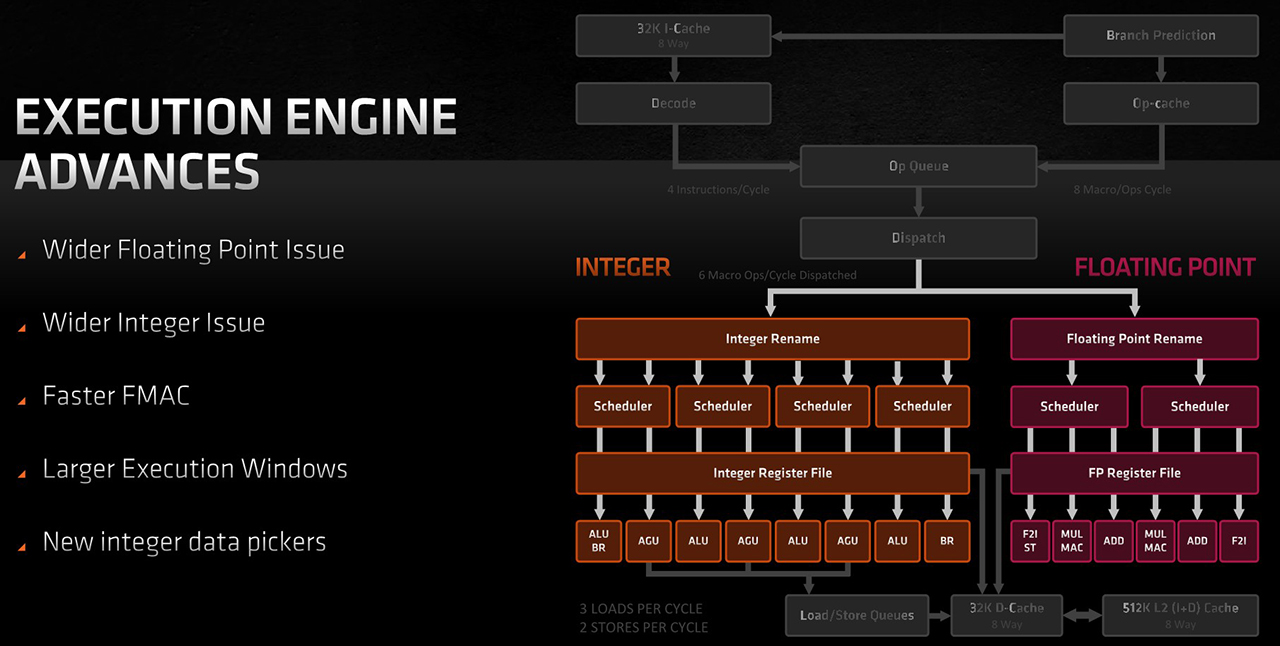

Meanwhile, AMD is following up that Computex announcement by clarifying a few things. And on the performance front, AMD is aiming for significant performance-per-watt and clockspeed improvements over their current Zen 3-based products. Zen 4 brings new CPU core chiplets as well as a new I/O die, adding support for features such as PCI-Express 5.0 and DDR5 memory. We’ve seen bits and pieces of information on Zen 4 thus far, most recently with the Ryzen 7000 announcement at Computex. Both of these are due to launch later this year. This includes the Ryzen 7000 (Raphael) client CPUs, as well as their 4 th generation EPYC (Genoa) server CPUs. Zen 4: Improving Performance and Perf-Per-Watt, Shipping Later This Yearĭiving right in, AMD is currently in the process of ramping up their Zen 4 architecture-based products.

So what’s coming down the pipe over the next couple of years is a very big deal for AMD, and the industry as a whole. The cornerstone of AMD’s recovery and resurgence into a competitive and capable player in the x86 processor space, the Zen architecture is the basis of everything from AMD’s smallest embedded CPUs to their largest enterprise chips.
#Zen 3 architecture update#
Kicking off FAD 2022 with what’s always AMD’s most interesting update is the Zen architecture roadmap. Everything here is high-level – don’t expect AMD to hand out the Zen 4 transistor floorplan – but it’s easily our best look at AMD’s product plans for the next couple of years.
#Zen 3 architecture full#
After all, how can you wisely invest in AMD if you don’t know what’s coming next?Īs a result, the half-day series of presentations is full of small nuggets of information about products and plans across the company. While the primary purpose of the event is for AMD to reach out to investors, analysts, and others to demonstrate the performance of the company and why they should continue to invest in the company, FAD has also become AMD’s de-facto product roadmap event. We'll split this piece up into four parts that cover the four major components of the Ryzen 7000 launch: 1) the Zen 4 CPU core, 2) the on-chip I/O die that supports the CPU's non-CPU features and handles internal connectivity, 3) the 600-series chipsets that handle most external connectivity, and 4) the physical AM5 socket that will outlive all of the other components by a few years.Today is AMD’s Financial Analyst Day, the company’s semi-annual, analyst-focused gathering. This one will focus on all the other changes, including the ones that will be with us long after Ryzen 7000 is old news. One is a look at the actual chips' performance and power efficiency, located here. So we're publishing two Ryzen pieces today.

The last time this many things changed at once was back in 2017, when the first-generation Ryzen chips originally launched. The processor architecture is changing, but it's also being accompanied by changes to everything from the chipset to the physical socket that the chips plug into. Further Reading Ryzen 7600X and 7950X review: Zen 4 starts off expensive but impressiveĪMD's Ryzen 7000 launch is bigger than just the processors.


 0 kommentar(er)
0 kommentar(er)
